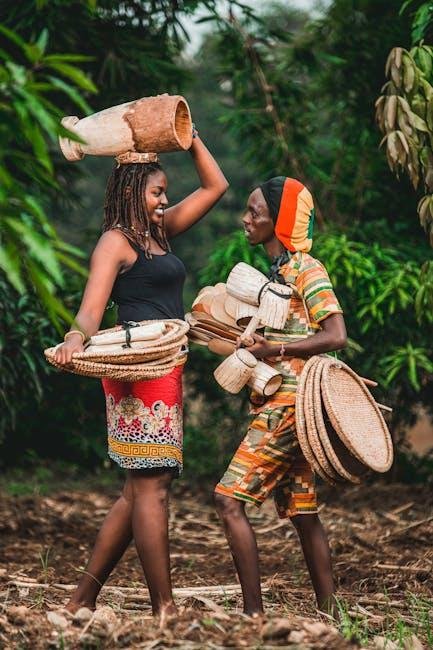In a world that thrives on diversity,the beauty industry stands at a pivotal crossroads,eager to redefine its narrative. Wiht an ever-growing chorus of voices advocating for depiction, inclusivity has transitioned from a mere buzzword to a powerful movement that challenges the status quo. Gone are the days when beauty was narrowly defined by a singular standard; today, it encompasses a rich tapestry of identities, skin tones, body types, and gender expressions. This article embarks on a journey through the landscape of the beauty industry, shedding light on the strides made towards inclusivity while also addressing the challenges that persist. Join us as we explore how brands, consumers, and influencers are shaping a more equitable beauty dialogue, where everyone can see themselves reflected in the mirror of beauty.
Understanding Representation in Beauty Marketing
In recent years, the beauty industry has undergone a significant transformation, increasingly focusing on authentic representation across diverse demographics. Brands are acknowledging that beauty does not conform to a singular standard; rather, it flourishes in a myriad of forms, colors, and identities. As a response, marketing campaigns have embraced a more inclusive approach, showcasing models of different ethnic backgrounds, body types, ages, and gender identities. This shift not only reflects the realities of contemporary society but also reinforces the message that everyone deserves to feel seen and valued in the world of beauty.
To better illustrate this shift in representation, consider the key elements that define inclusivity in beauty marketing today:
- Diversity of Models: Featuring people from various racial and cultural backgrounds.
- Body Positivity: Celebrating all body types, moving beyond customary beauty standards.
- Gender Fluidity: Including non-binary and genderqueer individuals in promotional materials.
- Age Representation: Highlighting individuals of different ages to reflect beauty at every stage of life.
The impact of such representation can be profound, fostering a sense of belonging among consumers who have traditionally been marginalized in beauty narratives. As brands continually strive to refine their messaging, they contribute actively to a cultural shift that emphasizes self-acceptance and the empowerment of all individuals, ultimately reshaping societal perceptions about beauty.

cultivating Diverse product Offerings for All Skin Types
Embracing a variety of skin types is essential for brands aiming to foster true inclusivity in beauty. By developing diverse product lines that cater to the unique needs of different skin types, brands can empower all individuals to celebrate their inherent beauty. This commitment to inclusivity means taking into account a range of factors,such as:
- Skin Tone: Products that range from fair to deep tones.
- Skin Concerns: Formulations addressing dryness, oiliness, sensitivity, acne, and hyperpigmentation.
- Skin Age: Solutions tailored for different life stages and their respective skin challenges.
To effectively provide options for everyone, beauty companies are increasingly investing in research and development to create formulations that suit a multitude of skin requirements.For example, a thoughtful approach to ingredient selection can result in a product line that highlights:
| ingredient | Benefit | Best For |
|---|---|---|
| Hyaluronic Acid | Hydration | All Skin Types |
| Salicylic Acid | Exfoliation | Oily & Acne-Prone |
| Vitamin C | Brightening | Dull & Uneven Skin |
| Niacinamide | Soothing | Sensitive & irritated Skin |

Enhancing Accessibility in Retail Spaces and Online Platforms
Accessibility in retail spaces and online platforms is paramount for fostering an inclusive beauty industry that welcomes everyone.Physical retail environments can adapt in numerous ways to cater to diverse customer needs. As an example, incorporating features such as wide aisles, automatic doors, and sensory-amiable lighting can greatly enhance the shopping experience for individuals with disabilities. Additionally, providing products at various heights and offering assistive technology like braille labels or audio guides can make navigating the store more feasible and welcoming for all shoppers.
On the digital front, web accessibility standards play a crucial role in ensuring that online platforms serve an inclusive audience. Brands can implement essential strategies to optimize user experience, such as:
- Using alt text for images to aid visually impaired users.
- ensuring keyboard navigation is possible for those with limited mobility.
- Providing captions and transcripts for video content.
By prioritizing digital accessibility,beauty brands can not only broaden their customer base but also cultivate a sense of belonging among all users,nonetheless of their abilities or backgrounds.

Empowering Voices: Collaborating with Underrepresented Communities
The beauty industry thrives on diversity yet frequently enough overlooks the voices of those who are underrepresented.Collaborating with marginalized communities not only enriches product offerings but also fosters a culture of inclusivity that benefits all. By engaging directly with thes voices, brands can gain invaluable insights into the unique needs and preferences of different demographics. This leads to more authentic representation, bridging gaps that have long existed in the industry.Key strategies for effective collaboration include:
- Community Workshops: Organizing events that allow community members to share their experiences and preferences.
- Advisory Boards: Forming panels composed of representatives from various backgrounds to guide product development.
- Interactive Social Campaigns: Utilizing social media platforms to engage with diverse audiences and amplify their stories.
To truly empower underrepresented communities, it’s essential to not only listen but also take action.By adopting a model that encourages co-creation, brands can discover innovative ideas that resonate on a broader scale. Establishing partnerships with local organizations can also provide a framework for sustained dialogue and collaboration. here’s a brief overview of innovative collaborative approaches:
| Approach | Benefits |
|---|---|
| focus Groups | Gather direct feedback from diverse participants on product development. |
| Scholarship Programs | Empower future leaders in the beauty industry from underrepresented backgrounds. |
| collaborative Product Lines | Create products developed in partnership with community influencers. |
Future Outlook
As we conclude our exploration of inclusivity in the beauty industry, it is clear that the journey toward a more equitable landscape is both complex and compelling. We’ve witnessed brands breaking barriers and expanding their definitions of beauty, while also acknowledging the challenges that remain. The call for inclusivity is not just a trend; it is a vital shift that empowers individuals to embrace their unique identities and express themselves authentically.
As consumers, advocates, and creators, we each play a role in this transformative movement. By celebrating diversity and demanding representation, we can continue to reshape the narrative of beauty into one that resonates with every individual, regardless of their background.The beauty industry has the potential not only to reflect society but also to inspire it. As we move forward, let us remain vigilant and passionate in our pursuit of inclusivity, ensuring that every shade, every form, and every voice finds its place in the spotlight. After all, true beauty lies in the collective strength of our differences, and it’s time we all take our rightful place in the canvas of this vibrant narrative.



